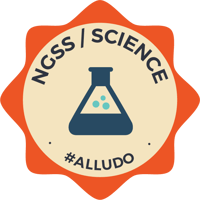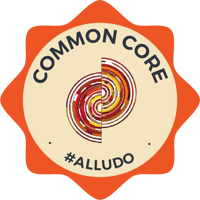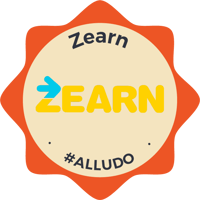Quick Tip Wednesday: How to Set Up a Gratitude Month
Welcome back to Quick Tip Wednesday!
6 min read
Julia Francis : Jul 18, 2022 11:00:00 AM
/ngss.jpg)
“Science knows no country, because knowledge belongs to humanity, and is the torch which illuminates the world. Science is the highest personification of the nation because that nation will remain the first which carries the furthest the works of thought and intelligence.” ~ Louis Pasteur
Science is one of the most important topics students can learn because it embodies the process of discovery. It shows young minds the necessity of asking questions and taking a methodical approach to finding the answers to those questions.
At Alludo, we believe that science instruction is essential to students’ education. We strive to curate a professional learning catalog that provides teachers with the tools they need to enlighten their students, and that includes courses related to NGSS and Common Core standards. In this post, we’ll explain what NGSS is and how these standards intersect with Common Core standards for math. We’ll also explore what school districts can do to successfully implement NGSS and CC standards.
The Next Generation Science Standards (NGSS) are standards developed by 26 states in partnership with the National Science Teachers Association, the National Research Council, the American Association for the Advancement of Science, and Achieve, which is a nonprofit organization that develops resources to prepare students for college and careers.
Development began with the creation of a Framework for K-12 Science Education, which was prepared by the National Research Council, the staff arm of the NAS (the National Academy of Sciences). The framework’s purpose was to identify the science that all students should learn and was based on the most recent scientific research available at the time of its development.
After the new standards were developed and evaluated, the public was invited to provide feedback. A final draft of the NGSS was released in April of 2013.
Here are some of the key components of NGSS.
NGSS was created to provide consistent science content standards for K-12 students in the United States. The committee that created the standards included two Nobel laureates as well as science standards and policy experts, science education researchers, and cognitive scientists. They used up-to-date research to create the academic standards that would be used.
The second key aspect of NGSS is that it’s a system that incorporates three-dimensional learning in three core areas:
/AL_10-Blog04-2.jpeg?width=450&name=AL_10-Blog04-2.jpeg)
The development of NGSS required collaboration among a broad spectrum of people interested in quality education, including states, school districts, schools, educators, and students.
As we noted above, a slim majority of states, 26 in total, participated in creating Next Generation Science Standards. You might be wondering how many states have adopted NGSS.
Let’s start with the states that have fully adopted NGSS for science instruction in school districts. 20 states plus the District of Columbia have adopted NGSS. These states represent 36% of K-12 students in the United States.
The 20 states that have adopted NGSS include large states such as California and Washington and small states such as Rhode Island and Hawaii.
If only 20 states have adopted NGSS for science instruction, you might wonder what’s happening with the other 30 states. The answer is that most of those have used the same NRC research that was used in the development of NGSS to develop their own set of standards for science education.
A total of 24 states, representing 35% of K-12 students, have chosen to use NRC research in this manner. Some of the states that have done so include Arizona, Louisiana, Massachusetts, and New York.
The remaining six states (Florida, North Carolina, Ohio, Pennsylvania, Texas, and Virginia) have not adopted any form of NGSS or NRC-based standards for science education.
/AL_10-Blog04-3.jpeg?width=450&name=AL_10-Blog04-3.jpeg)
While important, NGSS is not the only set of standards that states and school districts have adopted. For mathematics and English language arts (ELA), many school districts use Common Core standards in classrooms. Common Core standards provide teachers with consistent benchmarks and expectations for students, as well as setting key goals.
Common Core standards were sponsored by the National Governors Association and the Council of Chief State School Officers. 41 states have adopted Common Core standards, so as you might expect, there is some connection between NGSS and Common Core.
One aspect of Common Core standards and curricula is that they are designed to help students learn critical reasoning skills. It’s no surprise that these skills have applications in science education as well.
NGSS incorporates “reasoning skills used in language arts and mathematics to help students improve mastery and understanding.” These skills are taught as part of Common Core instruction in math and ELA and students who learn them in a school district that has adopted NGSS will learn how to apply these skills in science classrooms.
Now, let’s look at some of the key interactions between Common Core math standards and NGSS:
/AL_10-Blog04-4.jpeg?width=450&name=AL_10-Blog04-4.jpeg)
NGSS was designed to incorporate Common Core math standards by “focusing on how math practices line up with what you need to know to perform work in each scientific discipline.” In other words, NGSS and Common Core math work together to help students gain proficiency in STEM disciplines by providing them with instruction that intersects and builds capabilities and knowledge.
Whether teachers are in a state that has adopted NGSS or used NRC research to develop science standards, they can benefit from learning about and understanding NGSS. Here are some of the ways it can help them:
The bottom line is that providing tailored professional learning opportunities around NGSS will help school districts be confident that teachers understand what’s required of them and implement what they learn in the classroom to help their students learn and deliver the best possible outcomes.
The Alludo LEMUR learning model is designed to help school districts and teachers by providing a dynamic online learning environment that drives teacher engagement:
We provide a wide array of topics in our content catalog, including NGSS science instruction and Common Core topics. School districts can help teachers implement NGSS and Common Core and understand the connections between the two by partnering with Alludo.
 |
 |
 |
Our curated content and microlearning activities help teachers prepare to teach for NGSS and CC standards while also providing them with a voice and a choice in what they learn. We combine learning with gamification, something that drives engagement and enthusiasm in the school districts that use our model.
School districts that want students to learn about science in a way that builds enthusiasm and critical thinking skills may choose to do so with a combination of NGSS and Common Core standards. The key is providing teachers with the professional development they need to understand and adopt these standards to drive student engagement and learning for the best possible student outcomes.
Want to reach up to 100% PD in your district? See how Alludo can help make it happen with our free professional development platform trial, including:
.png)
Welcome back to Quick Tip Wednesday!

Mid-Year Reflection: Your Secret to a Stronger Second Semester
A great way to get your learners engaged in your Alludo program is by keeping the content in your program up-to-date and relevant. Rebecca has...